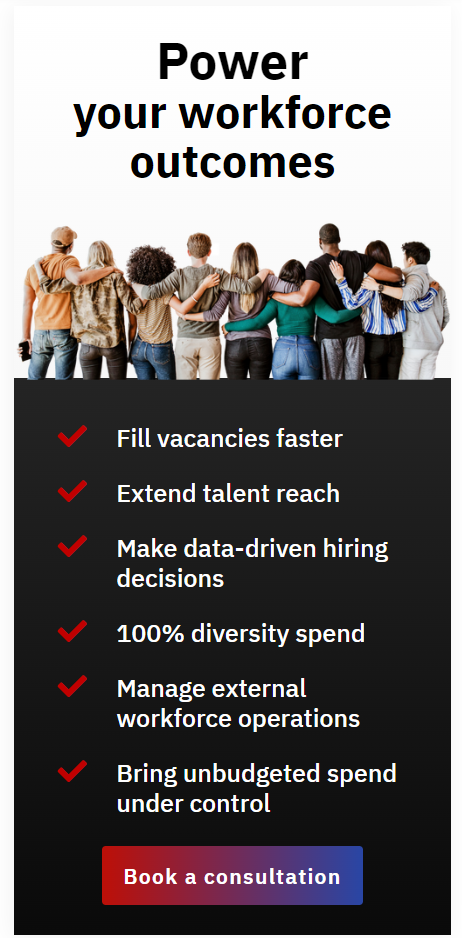How to Scale MSP Services as Your Business Grows
As your business grows, demands on your MSP services will increase. The challenge is identifying which aspects to focus on for the best results and adopting the right approach. Rapid growth can strain first-generation MSP programs, especially when clients seek 24/7 coverage, global payroll, or specialized tech skills, leading to fragmented tools and unclear SLAs. To scale MSP services effectively without chaos, a clear, step-by-step plan is essential.
This article guides you through the process, detailing how to integrate new technology, penetrate vertical markets, and expand geographic support while maintaining high quality and healthy margins. It will cover when to expand services, funding strategies, and safeguarding client satisfaction. With this roadmap, you can scale MSP services confidently, maintaining today’s successes while paving the way for future growth.
Know Your Baseline Before Expanding
Before considering adding new services, thoroughly assess your current MSP operations. Analyze key metrics such as your SLA adherence, client feedback, hiring costs, and any recent compliance issues. Patterns may quickly emerge, such as recruiters overwhelmed with requests or outdated VMS systems causing manual data entry. Put these findings into a simple scorecard that rates each service line or region on capacity, tech health, and process strength. The areas that score well are your safest bets for MSP scaling strategies. The ones that rank low show where you need to fix gaps before growth turns small issues into big headaches.
A 2024 SIA study found that using an MSP to manage contingent workforce and recruitment can allow businesses to save up to 20% on contingent staffing and placement fees compared to managing without an MSP.
Choose Your Scaling Path
With your baseline clear, the next step is picking how you’ll grow—tech first, sector focus, or geographic reach.
1. Deepen Technology.
If you’re still leaning on a basic VMS, upgrade to a talent‑intelligence platform that folds in automation, AI search, and real‑time analytics. The shift trims manual work, flags risks early, and lets recruiters spend more time with candidates instead of spreadsheets.
2. Add Vertical Expertise.
Fast‑moving industries—think healthcare, fintech, clean energy—often pay a premium for suppliers who “speak their language.” Stand up micro‑teams staffed by subject‑matter recruiters or partner with niche suppliers to gain instant credibility. A focused pod can expand MSP offerings without distracting the core desk.
3. Go Global.
Test the waters with a near‑shore delivery hub before jumping to full multi‑continent coverage. Use the pilot to nail down playbooks for mobility rules, local labor laws, and multi‑currency billing. Standardizing those pieces early keeps global MSP operations from turning into an accounting and compliance maze.
Technology Stack Upgrades
Growth highlights any weaknesses in your tech stack, so approach upgrades as a unified project, not separate side tasks. Choose systems with open-APIs that integrate smoothly with your current VMS or ATS, eliminating the need for nightly spreadsheets. Incorporate useful tools like a chatbot for initial screenings and an AI tool to keep pay in line with market rates. Centralize all clicks and costs into one data repository, creating real-time dashboards to track spending, diversity, and time to fill, ensuring nothing strays off course. Finally, give each platform an owner and run a quick audit every quarter. That small dose of governance keeps “tool sprawl” in check and your stack trim enough to scale MSP services.
Process Standardization & Playbooks
Good tech is half the battle; tight playbooks win the war on chaos. Start by mapping each new workflow—SOW intake, direct‑sourcing funnels, global payroll—step by step and stash it in a living guide your team can actually find. Tag every stage with a quick RACI so recruiters, account managers, and compliance leads see exactly when to pass the baton.
Ask the MSP to audit each step of its process and remove any extra clicks or sign‑offs before demand ramps up. Have them pilot the streamlined workflow with a single business unit, review real‑world results, and adjust as needed. Once the approach proves itself, roll the same model into the next region. That way, expansion feels like adding a well‑fitted module, not taking a risky leap.
Talent & Culture Preparation
Playbooks are ineffective if your team can’t keep pace. Once you finalize new workflows, compare them to the current skill set in your organization. Identify gaps in areas like AI sourcing, multilingual vendor calls, or global tax nuances quickly. Address these with targeted upskilling: a micro-credential in data analytics, a vendor-neutral tech certification, or a lunch-and-learn on global labor law for those handling cross-border accounts.
Skills alone won’t carry the load, so shore up culture too. Push a rhythm of quick experiments, open retros, and communication channels where recruiters swap hacks in real time. When people expect change and share what they learn, managed services growth feels like momentum, not extra weight.
Quality‑Control Safeguards
Prioritize consistency as you grow. Set up strong guidelines before expanding. Begin with tiered service level agreements (SLAs): make essential promises like fill rates and accurate invoices simple and realistic. Offer extra services like 24-hour sourcing and executive dashboards as paid options. Support these commitments with quality assurance (QA) teams that weekly check samples of placements, supplier ratings, and compliance documents, then share their results in a common channel.
Pair the internal pulse with an external one: quick NPS snapshots after each milestone and a no‑slides‑allowed quarterly review to surface drift while it’s still tiny. Finally, lean on a living risk matrix. Rate every new region or sector for regulatory tangle, then dial up checks where rules run thickest. Quality stays tight even as the footprint stretches.
Cost & Margin Management
For scaling to be effective, keep a close eye on the numbers alongside your growth plan. Maintain a dashboard tracking unit economics—cost per requisition, gross profit by service line, and the ROI of every new tool. Use this data in negotiations with tech vendors to ensure that volume-based pricing helps maintain margins. Set clear growth criteria: don’t expand into new areas until the previous ones are profitable. Allocate a scaling fund of about three to five percent of annual MSP revenue to cover unexpected costs like sudden onboarding increases or mid-project API changes. Margins stay healthy, expansion stays controlled, and scale MSP services sustainably.
Managed‑services revenue is forecast to hit $342 billion in 2027, up from $268 billion in 2022.
Workspend’s Scaling Playbook
At Workspend, we scale by blueprint, not by guesswork. Our continuous‑service squads flex with client demand, so you never feel the “big launch, slow lag” dip that plagues lift‑and‑shift models. Every add‑on lives in a modular rack: core VMS oversight clicks in first; expand MSP offerings like Direct Sourcing, SOW control, IC compliance, or Payrolling/EoR slide in only when the data says the timing—and margins—are right.
When growth crosses borders, our compliance engine runs real‑time checks against rules in 190‑plus countries, cutting setup delays to days, not months. Because we’re a certified woman‑ and minority‑owned MSP, diversity isn’t an afterthought; new suppliers and talent pools are vetted for inclusion from the start. And throughout the ride, our WRAP platform provides live dashboards that track fill rates, savings, and risk flags, giving clients proof of value—plus early warning—long before issues snowball.
Conclusion
Scaling MSP services requires a strategic and measured approach to maintain quality and client satisfaction. By addressing challenges with focus and precision, such as enhancing technology, exploring new sectors, or launching pilot regions, you can ensure steady progress. Depend on reliable data for informed decisions, develop skills and strategies continuously, and enforce quality controls to prevent growth from diluting service standards. Approach this expansion thoughtfully, aligning it with clear objectives and structured steps, to transform growth from a potential risk into a routine success. By doing so, you scale with confidence, preserving today’s achievements and setting the foundation for future victories.
Curious how a modular, numbers‑first approach to MSP scaling strategies works in the real world? Contact Workspend for a free discovery assessment—we’ll show exactly how to scale MSP services in line with your goals and prove the value before you invest in the next stage of managed services growth.
You may also like:
5 MSP Performance Metrics You Should Track to Ensure Success
Published : March 14th 20255 MSP Performance Metrics You Should Track to Ensure Success Managed Service Providers (MSPs) take on essential tasks—from IT support to network monitoring and infrastructure management—so clients can concentrate on their core objectives...
AI Should Augment Human Intelligence, Not Replace It
Will smart machines replace human workers? How human intelligence can work with artificial intelligence to produce augmented intelligence.
How Well Do You Really Know Your Contingent Workforce Spend?
By understanding these critical factors, you can ensure compliance, improve efficiency, and unlock the full potential of your contingent workforce while safeguarding your financial health.
Power your workforce
outcomes with a diversity MSP






